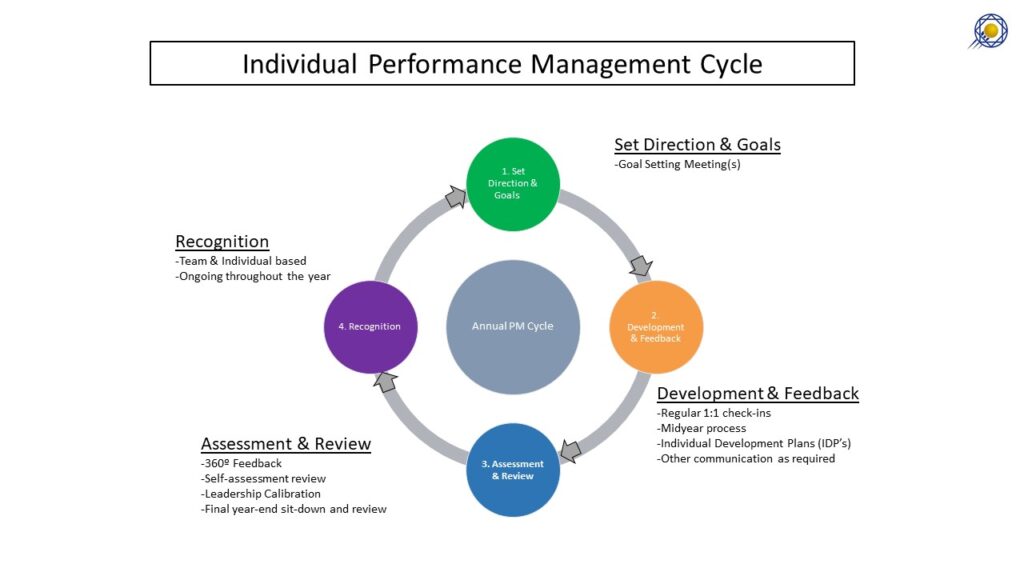
In the last few years, there has been more debate over the value of performance management, specifically annual reviews. Most are missing the point if they consider these two terms interchangeable. I would fully agree *that if* an organization only espouses a leader and an employee to get together once per year to discuss goals, successes, challenges, and development needs, then yes, it is a waste of time, no matter how noble the intent.
Based on my experiences, I think that approach began disappearing over twenty years ago. I’ve spent time with many companies that believe it is a continuous improvement activity, not unlike process improvements, but with a greater focus on the individual and their development. It is an apex between traditional HR, people-led development and coaching processes and the CI vision of incremental process improvements. The cycle shown above is not that different from a PDSA cycle.
I had the chance to help implement a performance management system a few years ago. In hindsight, I believe it was viewed successfully, yet some critical moments of uncertainty and anger did sprout up. The anxiety over change was well seen, and the traditional change curve was clearly witnessed as the team moved the phases. Why would I, and hopefully the team, say it was successful? A few key aspects stood out to me:
1. I involved a core group of front-line individuals who not only were active participants in the process but were able to enhance engagement by leveraging their relationships with others to garner feedback – we were able to get an accurate set of preferences and feedback from a majority of the organization – the voice of the customer at it’s finest.
2. I viewed my role as much as a facilitator and ideator, not an enforcer of pre-planned notions of where the organization wanted to go with the process. This is entirely credit to the leadership at this organization for wanting as meaningful and flexible a process as possible. It was a collaborative effort; I only provided some loose framework and ideas.
3. The core group checked in with each other. We discussed how we were feeling and how our teams were doing. As I mentioned, anger, resentment, confusion, and anxiety existed. We did get through it by discussing our feelings and having as many sidebar conversations (1:1 or with larger teams) as required. Although there was resistance, there was still a heartfelt belief in wanting to do something better since the existing process was not working. These conversations formed and strengthened trust, especially knowing I was an outsider.
4. Lastly, we focused on the processes and not the actual goals or KPIs at this conception stage. Those would come later and be specific to each department and individual. Reviewing them in depth at this point, with so many unique situations, would bog the team down. We did get into examples when needed to help provide clarity, especially when showing a linkage from a company strategy to an individual goal.
The organization is now two cycles into the process. Is everything perfect? Absolutely not. However, there is now a well-understood strategy for the organization, which most of the team is aware of and aligned with. Goals can be cascaded from an Organization level (ex., BSC) to a department level (Dashboards, KPIs, Leader performance cycle) to an individual level (PM Cycle). That’s how the power of an organization can be harnessed to achieve its strategy.
